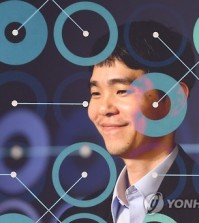- California Assembly OKs highest minimum wage in nation
- S. Korea unveils first graphic cigarette warnings
- US joins with South Korea, Japan in bid to deter North Korea
- LPGA golfer Chun In-gee finally back in action
- S. Korea won’t be top seed in final World Cup qualification round
- US men’s soccer misses 2nd straight Olympics
- US back on track in qualifying with 4-0 win over Guatemala
- High-intensity workout injuries spawn cottage industry
- CDC expands range of Zika mosquitoes into parts of Northeast
- Who knew? ‘The Walking Dead’ is helping families connect
All culture is Internet culture
By Eric Schmidt
Artists and engineers tend to look, dress and speak so differently that we tend to separate art from technology in cultural discussions. When we do connect the two it’s usually to complain.
When I was growing up, people who complained about rock and roll were hearing a technological shift as much as a musical one: who can imagine rock and roll without the invention of the recording studio, the electric guitar and the transistor radio?
The modern version of this would be a big sigh about kids keeping their heads permanently bowed as they maintain an intense focus on the smartphone. But I think the kids have something to teach the elders in this case.
All culture is becoming Internet culture, and that’s going to be a good thing, especially in Korea. The same technologies that make social networks and viral videos spread like wildfire are also helping symphonies, art and theatre spread at the same speed. And that benefits countries like Korea more than most others. If PSY can go viral, why not Korean architecture or literature?
The great advantage of turning culture into bits and then letting those bits travel across the Internet is all the room it creates for all kinds of culture. It’s no longer a fight between high and low or east and west or big or small. And that’s to Korea’s benefit. It’s now able to find room for itself in the global culture.
Ten years ago searches for J-pop were ten times those of K-Pop. But as music shifted online and listening to music no longer depended on the decisions of a radio station or store purchasing manager, K-Pop gained. In 2008, searches for J-Pop and K-Pop drew even. In 2013, searches for K-Pop exceed J-Pop by a large margin. When you consider that 90 percent of K-Pop videos on YouTube are watched from outside Korea, you have to ask: How would that audience have found PSY just ten years ago? The answer is that they probably wouldn’t.
The fact is that pre-Internet technology didn’t help cultures like Korea’s as much as it helped cultures that also had economic power. America’s scale allowed it to fund blockbuster movies that few other countries could match, few bands could have a global hit that wasn’t a hit in America first and American food became the global cuisine.
American made pizza is world-famous, not Italian. (In Italy, pizza was only eaten in Naples; the rest of Italy only began to eat it after America adopted it) The bandwidth for culture was limited by the number of movie screens, book-store shelves and radio stations. Within that limited space, countries struggled to sell their cultures overseas and sometimes even at home, unless they had regional or global power.
The rise of K-pop, on the other hand, shows how the Internet is capable of providing equal opportunity to all culture, whether its classical art or music, just as it did for PSY and “Gangnam Style.”
YouTube’s channel dedicated to classic Korean movies is visited overwhelmingly by people outside Korea, many of whom would have a hard time finding copies of the movies in stores, or would have to hunt to obscure corners of the TV Guide to watch “My Mother and Her Guest.”
Now they can watch those classics as easily as they can send an email. Twenty thousand people are subscribed to the Korean-classic-movie channel and 60% of the channel’s views come from overseas.
The movement of culture online is also changing how culture is taught. The world has often looked at Korea’s achievements in education with such envy that if it there was to be a way to export great teaching, Korean classrooms would probably rival smartphones.
Actually, there is a way to export it. While many parents and teachers shudder at the sight of students using their smartphones, a Korean start-up called “Classting” saw an opportunity to forge new connections between teachers, students and parents. Teachers and students across the world are using the app and the company has got a 1 billion won investment from Softbank Ventures.
Even food, surely the most offline of human experiences, has become a part of Internet culture. From 2004 to 2013, the volume of searches for kimchi on Google rose by four times. Searches for sushi, which had the spectacular rise in the age of books, have risen more slowly than searches for kimchi. Any successful recipe for expanding the palate of the world begins with the Internet, then moves into the kitchen.
By now you can see why we’re helping the National Hangeul Museum create a new online experience for people interested in Hangeul. We’ve already seen on YouTube that people who watch K-Pop tend to search for ways to learn the language and, in fact, one YouTube partner has won tens of thousands of subscribers by explaining Korea’s grammar and writing to the world by linking the lessons to K-Pop. The museum will expand on that principle and create a rich site that will allow anyone who wants to, to learn Korean.
This isn’t the first time that communications technology has led us to change how we approach culture. In the 19th century, the German poet Johann Wolfgang von Goethe in the early 19th century assumed that cheap printing and a more efficient postal system would lead to a new “world literature.”
Goethe’s prediction also comes with a caution. He didn’t think that a world literature would be more sophisticated than a national one. What excited him was that “those who have devoted themselves to higher and more fruitful endeavors will become more easily and more intimately acquainted.” And that’s exactly what excites me about the movement of all culture online two centuries later.
Let’s assume that only one person in a hundred who watches a Psy video actually wants to learn more about Korean culture. In the pre-Internet age, that wouldn’t count for much. But today, one percent of Gangnam Style’s 1 billion video views amounts to more than 10 million views, double the number of people who walk into New York’s Metropolitan Museum of Art each year.
The curators of Korea’s national heritage have a chance to reach kids who will never travel to Korea, never wanted to travel to Korea but suddenly want to know how those unfamiliar letters are formed, and think it might be cool to learn it.
It’s time to make sure that we don’t treat Internet culture as separate from the rest of culture. All culture is Internet culture and so if we want the best possible culture we all have to work on having a rich and cultural Internet.
















